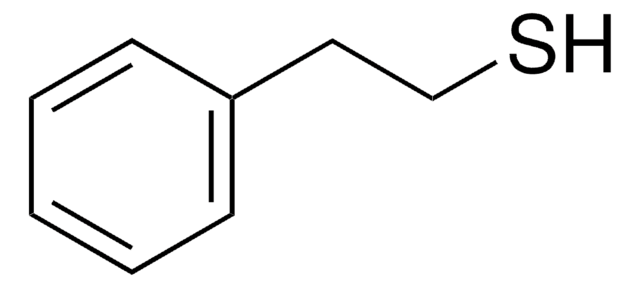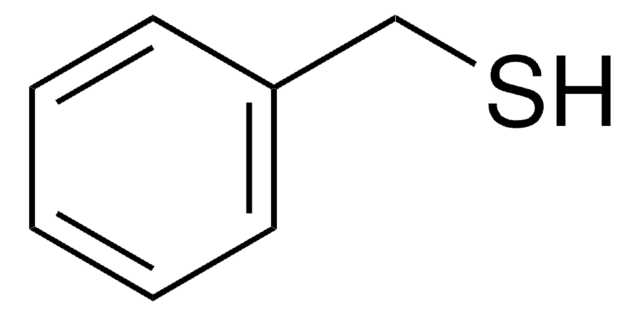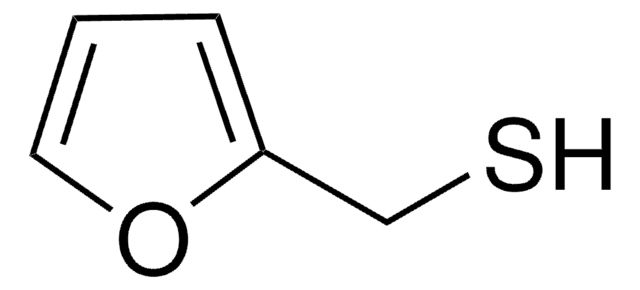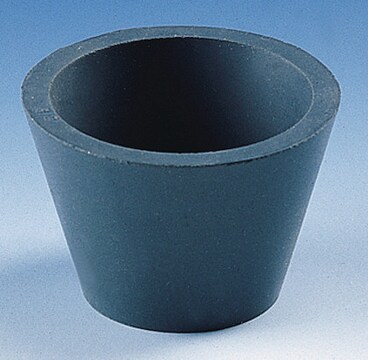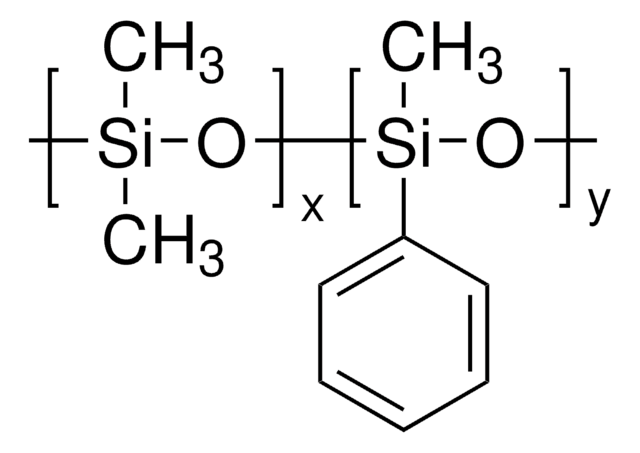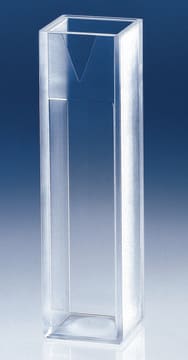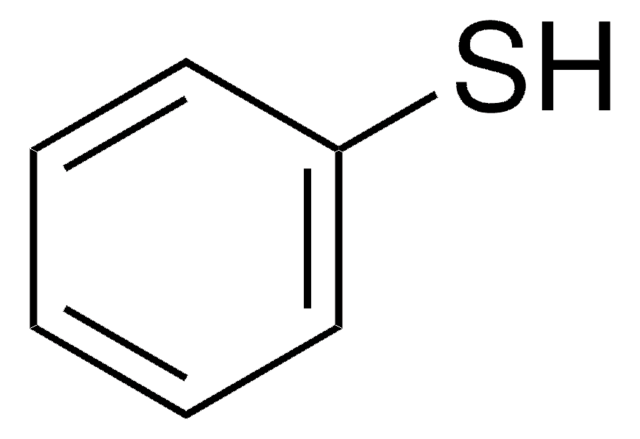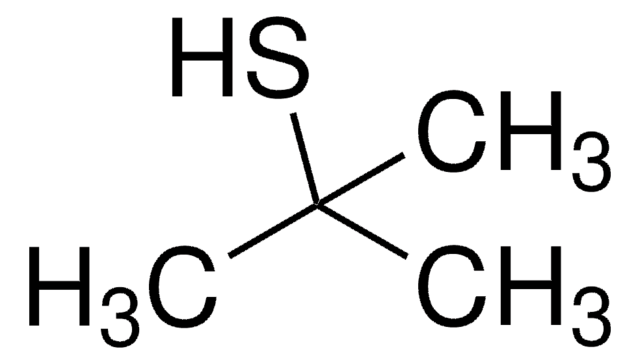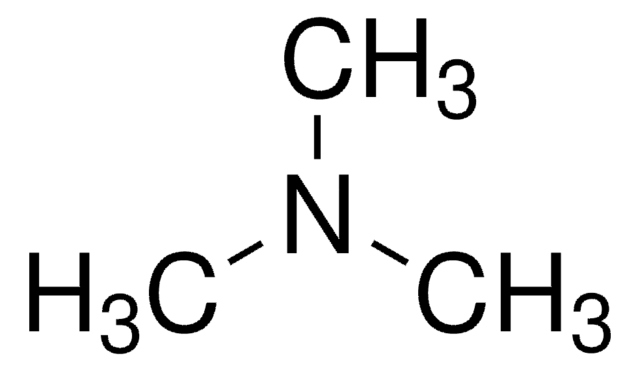W389404
Phenylethyl mercaptan
≥99%, FG
Sinónimos:
2-Phenylethanethiol, 2-Phenylethyl mercaptan, Phenethyl mercaptan
About This Item
Productos recomendados
origen biológico
synthetic
grado
FG
Halal
Agency
meets purity specifications of JECFA
cumplimiento norm.
EU Regulation 1334/2008 & 178/2002
FDA
Ensayo
≥99%
índice de refracción
n20/D 1.560 (lit.)
bp
217-218 °C (lit.)
densidad
1.032 g/mL at 25 °C (lit.)
aplicaciones
flavors and fragrances
Documentación
see Safety & Documentation for available documents
alérgeno alimentario
no known allergens
Organoléptico
sulfurous
cadena SMILES
SCCc1ccccc1
InChI
1S/C8H10S/c9-7-6-8-4-2-1-3-5-8/h1-5,9H,6-7H2
Clave InChI
ZMRFRBHYXOQLDK-UHFFFAOYSA-N
¿Está buscando productos similares? Visita Guía de comparación de productos
Categorías relacionadas
Código de clase de almacenamiento
10 - Combustible liquids
Clase de riesgo para el agua (WGK)
WGK 3
Punto de inflamabilidad (°F)
194.0 °F - closed cup
Punto de inflamabilidad (°C)
90 °C - closed cup
Equipo de protección personal
Eyeshields, Gloves, multi-purpose combination respirator cartridge (US)
Elija entre una de las versiones más recientes:
¿Ya tiene este producto?
Encuentre la documentación para los productos que ha comprado recientemente en la Biblioteca de documentos.
Los clientes también vieron
Nuestro equipo de científicos tiene experiencia en todas las áreas de investigación: Ciencias de la vida, Ciencia de los materiales, Síntesis química, Cromatografía, Analítica y muchas otras.
Póngase en contacto con el Servicio técnico